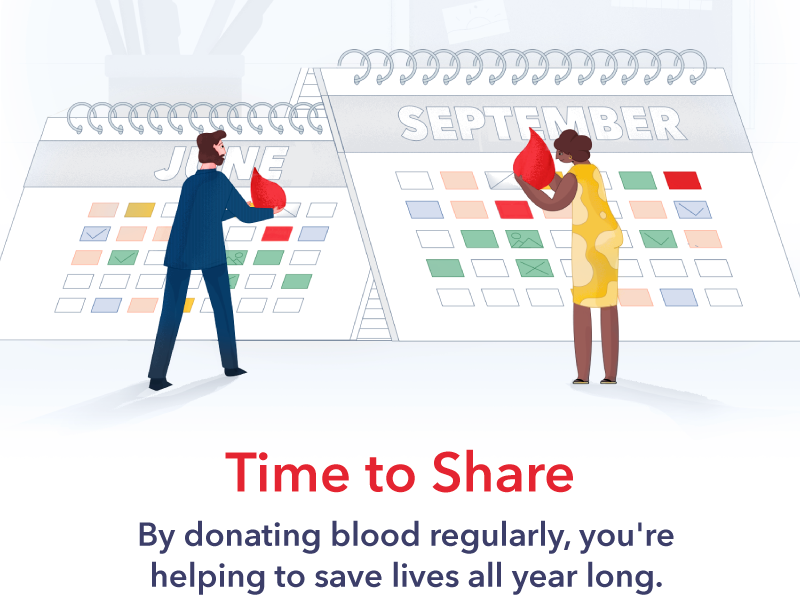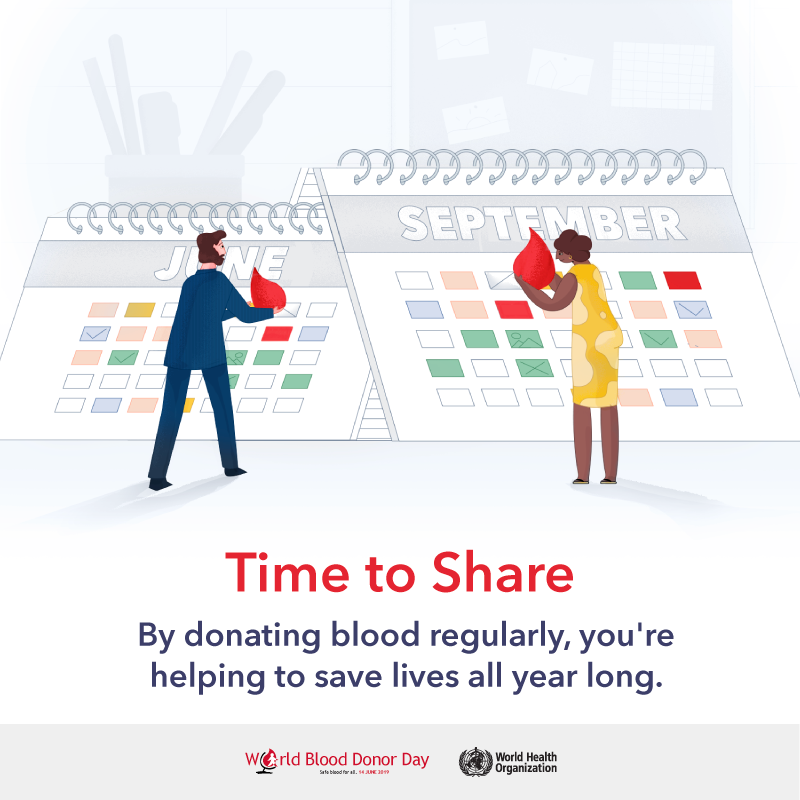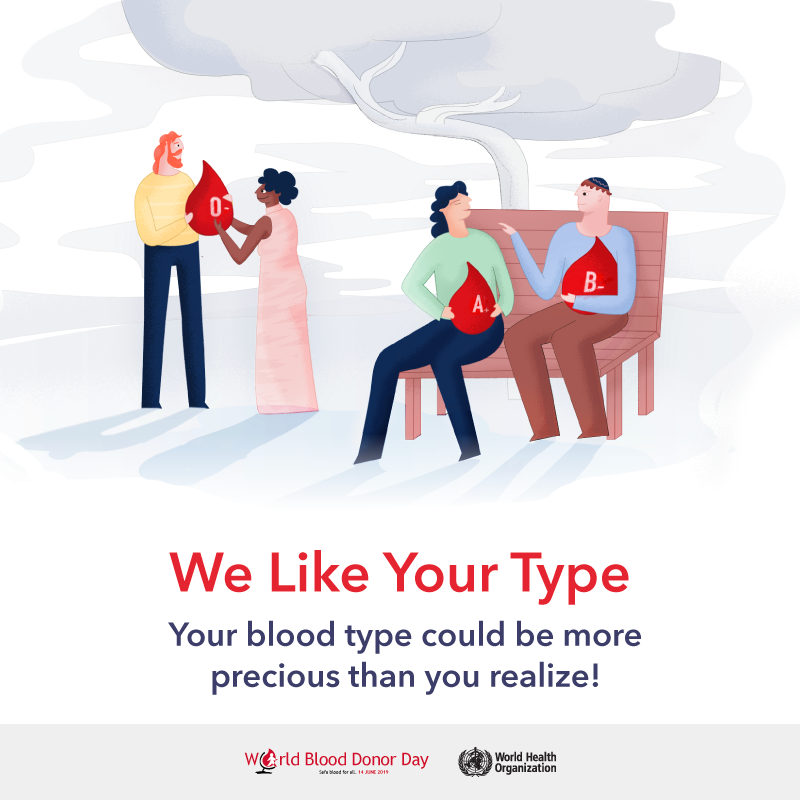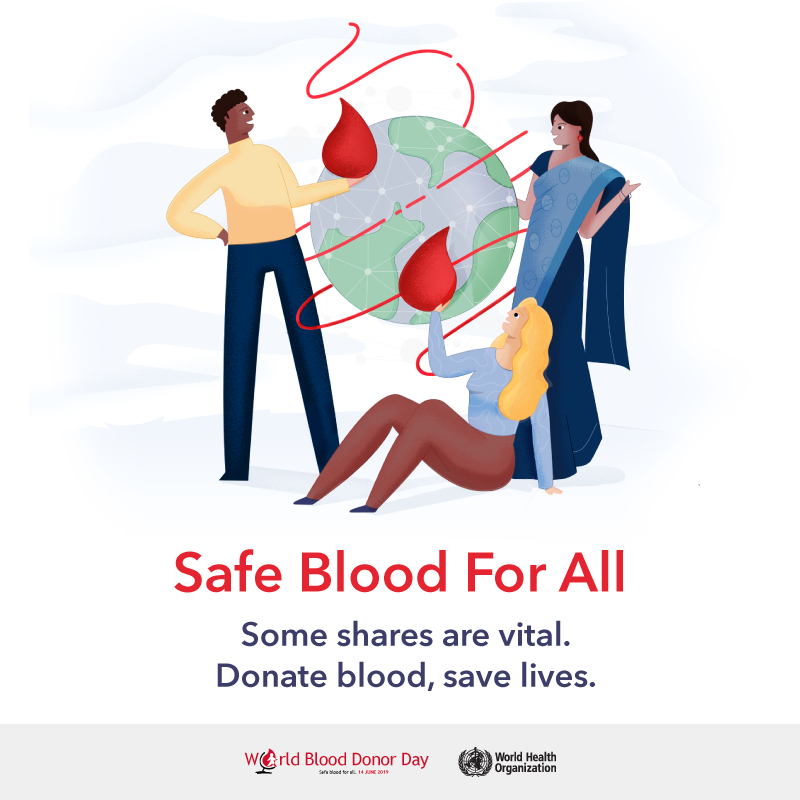
14th of June 2019, World Blood Donor Day: Theme for this year “Safe blood for all”
 Today, 14th of June 2019 is celebrated globally as World Blood Donor Day. The theme for this year is “Safe blood for all”.
Today, 14th of June 2019 is celebrated globally as World Blood Donor Day. The theme for this year is “Safe blood for all”.
The need for blood and blood products is universal, but access to safe blood and blood products varies greatly across and within countries. In many countries, it is challenging for blood services to make sufficient blood and blood products available, while also ensuring its quality and safety.
The key messages WHO wants to convey on this day are:
Everyone should:
• Become a blood donor today and help save lives.
• Commit to being a regular donor and give blood throughout the year.
• Encourage your friends and family to become regular blood donors.
• Volunteer with the blood service to reach out to members of your community, provide care to donors, and help manage blood donation sessions/drives.
• Find out your blood type and register as a blood donor.
Participate in local World Blood Donor Day events.

Ministries of Health should:
• Organize and participate in activities to celebrate World Blood Donor Day, promoting voluntary unpaid blood donation to the public, across government and to other sectors.
• Acknowledge the important role of blood donors in achieving the goal of “safe blood for all” and universal health coverage.
• Provide resources and infrastructure to facilitate voluntary blood donation.
• Support the development of nationally coordinated blood transfusion services that provide equitable access to safe and quality assured blood transfusions for the whole population.
• Put quality assurance systems in place for blood and blood products.
• Download and distribute WHO’s World Blood Donor Day materials to health centres.
• Speak to media about the importance of blood donation and the successes and challenges of your country in meeting national needs for blood.

National blood transfusion services should:
• Disseminate information about the importance of giving blood.
• Print out and distribute posters that you can download from the World Blood Donor Day campaign web site.
• Organize a World Blood Donor Day celebration. This could include:
(i) Inviting prominent politicians, celebrities and sporting heroes to participate;
(ii) Producing, displaying and disseminating promotional materials such as t-shirts, caps and stickers.
(iii) Holding open days at blood centres and inviting the public to learn about blood donation and transfusion;
(iv) Organizing blood drives, highlighting the need for year-round donation to maintain adequate blood supplies and achieve universal and timely access to safe blood transfusion.
• Improve the infrastructure for blood donation and blood donor care.
• Focus attention on donor health and care and provide quality service to blood donors.
Blood and blood products are essential to care for:
• Women with pregnancy and childbirth associated bleeding;
• Children with severe anemia due to malaria and malnutrition;
• Patients with blood and bone marrow disorders, inherited disorders of haemoglobin and immune deficiency conditions;
• People with traumatic injuries in emergencies, disasters, and accidents; and
• Patients undergoing advanced medical and surgical procedures.